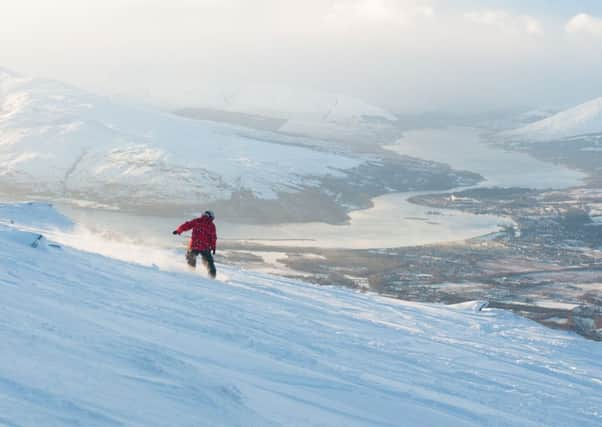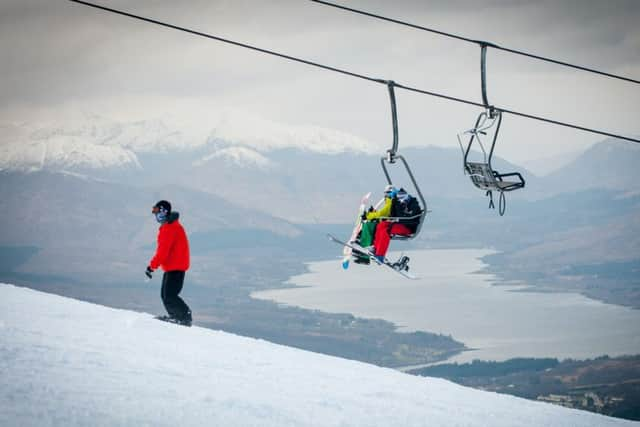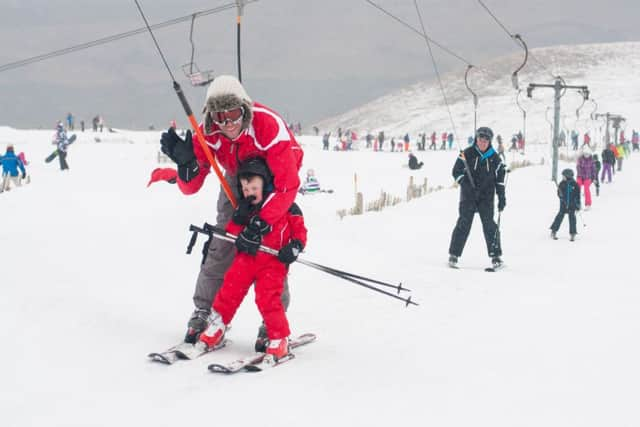A beginners' guide to skiing in Scotland


WHERE TO GO
If you’re looking for a safe place to establish your skiing skills, an indoor or dry ski slope could be the best place to start. Snow Factor at intu Braehead in Glasgow (https://www.snowfactor.com/) has the longest slope in the UK. Because it’s indoors, you can hit the slopes at any time.
Dry ski slopes can also be found throughout Scotland. Midlothian Snowsports Centre (formerly Hillend Ski Centre) is home to one of Europe’s longest artificial slopes, which offers lessons at all levels along with equipment and trained professionals. You can find other dry ski slopes in Newmilns, Kincraig and East Dunbartonshire.


Advertisement
Hide AdOnce you’ve found your feet and your confidence, it’s time to hit the slopes covered in the real stuff.
There are five main skiing destinations across the Highlands:
Glenshee
Glenshee has the largest ski area so it’s perfect for varied types of skiing. It has 22 lifts and 36 runs which offers a large amount of diversity of natural terrain for skiers of any level. (http://www.ski-glenshee.co.uk/)


Nevis Range
Nevis Range is one of Scotland’s more challenging terrains. Surrounded by the formidable Grampian mountain range, its spectacular views and height makes it one of the most popular skiing destinations. The range has plenty of scope for beginners with a significant number of the area dedicated to intermediate and novice levels. (http://www.nevisrange.co.uk/)
Glencoe Mountain Resort
Possibly one of Scotland’s most famous ski resorts, Glencoe has been around since the ‘50s and was the first lift-served vertical descent. Its slopes, The Plateau in particular, are the perfect starting point for beginners with beautiful views to be had at any level. (http://www.glencoemountain.co.uk/)


Lecht Ski Centre
As one of the quieter and smaller resorts, Lecht is the best destination for kids and beginners. Although it is smaller than other named Scottish resorts, its size means that queues are usually smaller, meaning more time to practice your technique. (http://www.lecht.co.uk/)
Cairngorm Mountain Resort
Advertisement
Hide AdCairngorm gets more snow than the rest of the Scottish skiing resorts. The launch of its Snow School also means that it’s a great place to learn how to ski from experienced professionals. (http://www.cairngormmountain.org/)


WHEN TO GO
Seasons usually run from December all the way through to April varying depending on snowfall.
Advertisement
Hide AdOctober and November are often good periods to visit Lecht and Glensee, whereas later on in the year there is a higher chance for late snow, best for western resorts such as Nevis Range and Glencoe. Located centrally, Cairngorm is best-placed of all Scotland’s resort for snow.
You can always check the weather ahead of your trip to make sure you get the best snow possible.
WHAT TO WEAR
Alex McAlindon, an expert from Ellis Brigham Mountain Sports’ Braehead store (others include Aviemore and Fort William) has five top tips for kitting out as a beginner.
1. Start with a base layer of thermal underwear which will wick away perspiration resulting from exertion, keeping your body temperature consistent. Build on that base layer with mid and outer layers. Layering is key to comfort.
2. Invest in good gloves or mitts. Make sure they are waterproof and not so tight that they stop circulation. If you start to get cold fingers, slip them out of the individual digits and squeeze into a fist. Best to do when on the lift rather than the slopes.
3. Most resorts require a helmet. Though you may be able to hire them, by buying your own you can ensure you get one that fits the shape of your head. There are even custom fit ones available that have air bags inside that can be inflated to give a snug fit.
Advertisement
Hide Ad4. Protect your eyes from the glare of sunshine on snow with either sunglasses or goggles at all times. Helmets tend to have external slots to secure your goggles to so you don’t have to worry about leaving them somewhere when you stop for a break. Some come with interchangeable lenses so that you’ve got all light conditions covered.
5. First time skiers are fine with rental equipment, but if you’ve already had lessons at your local ski centre and know you want to take things to the next level then it’s worth investing in your own. Boots should be a priority as they can be custom fit in-store to give you the best fit for your feet.